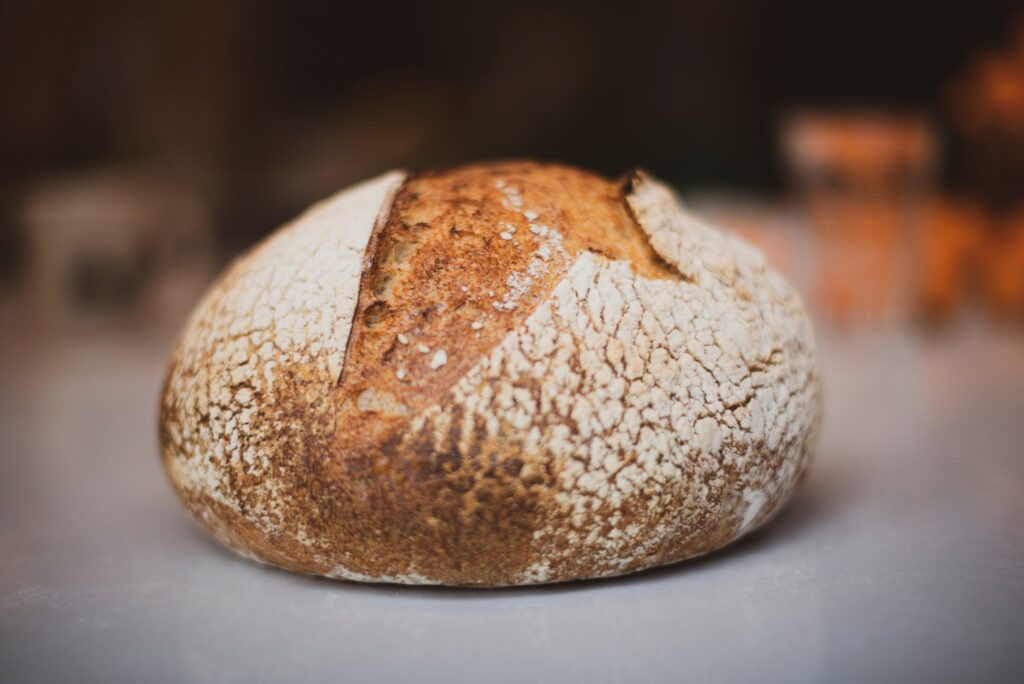The Love Feast, or Agape Meal, is a Christian fellowship meal recalling the meals Jesus shared with disciples during his ministry and expressing the koinonia (community, sharing, fellowship) enjoyed by the family of Christ.

Although its origins in the early church are closely interconnected with the origins of the Lord’s Supper, the two services became quite distinct and should not be confused with each other. While the Lord’s Supper has been practically universal among Christians throughout church history, the Love Feast has appeared only at certain times and among certain denominations.
The modern history of the Love Feast began when Count Zinzendorf and the Moravians in Germany introduced a service of sharing food, prayer, religious conversation, and hymns in 1727. John Wesley first experienced it among the Moravians in Savannah, Georgia, ten years later. His diary notes: “After evening prayers, we joined with the Germans in one of their love–feasts. It was begun and ended with thanksgiving and prayer, and celebrated in so decent and solemn a manner as a Christian of the apostolic age would have allowed to be worthy of Christ.”
It quickly became a feature of the Evangelical Revival and a regular part of Methodist society meetings in Great Britain and throughout the English–speaking world. As Methodists immigrated to North America they made Love Feasts an important part of early American Methodism.
While Love Feasts became less frequent in the years that followed, they continued to be held in some places; and in recent years the Love Feast has been revived. Love Feasts have often been held at Annual Conferences and Charge Conferences, where persons may report on what God has been doing in their lives and on the hope and trust they place in God for the future. The Love Feast is also an important part of the practice of Covenant Discipleship groups. Christmas, New Year’s Eve or Day, the weekdays of Holy Week, and the Day of Pentecost are also fitting occasions for a Love Feast. A Love Feast may also be held during a congregational supper.
The Love Feast has often been held on occasions when the celebration of the Lord’s Supper would be inappropriate—where there is no one present authorized to administer the Sacrament, when persons of different denominations are present who do not feel free to take Holy Communion together, when there is a desire for a service more informal and spontaneous than the communion ritual, or at a full meal or some other setting to which it would be difficult to adapt the Lord’s Supper.
Prepare the Love Feast
Bake Bread Together
Gluten and Nut Allergen Free Recipe from The Local Church
Set the Table Together
Set the table with food (a full meal is preferable), a candle, and The Bible. Gather with others in your household or via social media or phone.
The Love Feast is most naturally held around a table or with persons seated in a circle, but it is possible to hold it with persons seated in rows. A church sanctuary, fellowship hall, or home is an appropriate location.
One of the advantages of the Love Feast is that any Christian may conduct it. Congregational participation and leadership are usually extensive and important, especially involving children.
Read Scripture Together
Scripture is also important. There may be scripture readings, or persons may quote Scripture spontaneously as the Spirit moves. There may be a sermon, an exhortation, or an address; but it should be informal and consist of the leader’s adding personal witness to what spontaneously comes from the congregation.
Share Testimony Together
Testimonies and praise are the focal point in most Love Feasts. Testimonies may include personal witness to God’s grace or accounts of what God has been doing in the lives of others. Praise may take the form of hymns, songs, choruses, or spoken exclamations and may vary from the relative formality of an opening and closing hymn to spontaneous calling out of requests and singing as the Spirit moves. Sometimes the leader guides those present alternating spontaneous singing and sharing in free and familiar conversation for as long as the Spirit moves. Wesley counseled that all the above be done decently and in order.
Pray Together
Prayer is vital to a Love Feast. A fixed form of prayer may be used, especially something like the Lord’s Prayer or Be present at our table, Lord, that is familiar to the people. Spontaneous prayer requests and prayers may come from the people.
Eat Together
Most Love Feasts include the sharing of food. It is customary not to use communion bread, wine, or grape juice because to do so might confuse the Love Feast with the Lord’s Supper. The bread may be a loaf of ordinary bread, crackers, rolls, or a sweet bread baked especially for this service. If a loaf of bread, it may be broken in two or more pieces and then passed from hand to hand as each person breaks off a piece. Crackers, rolls, or slices of bread may be passed in a basket. The beverage has usually been water, but other beverages such as lemonade, tea, or coffee have been used. Early Methodists commonly passed a loving cup with two handles from person to person, but later the water was served in individual glasses. The food is served quietly without interrupting the service.
The Love Feast may also be followed by a full meal, in which case persons or families may bring dishes of food for all to share. During the meal there may be informal conversation in Christian fellowship or the leader may direct the conversation by suggesting matters of mutual concern, or there may be spontaneous witnessing and praise. If there is food left over, it may be taken as an expression of love to persons not present.
Words in Italics are from the United Methodist Book of Worship: “The Love Feast” (pages 581-582)
